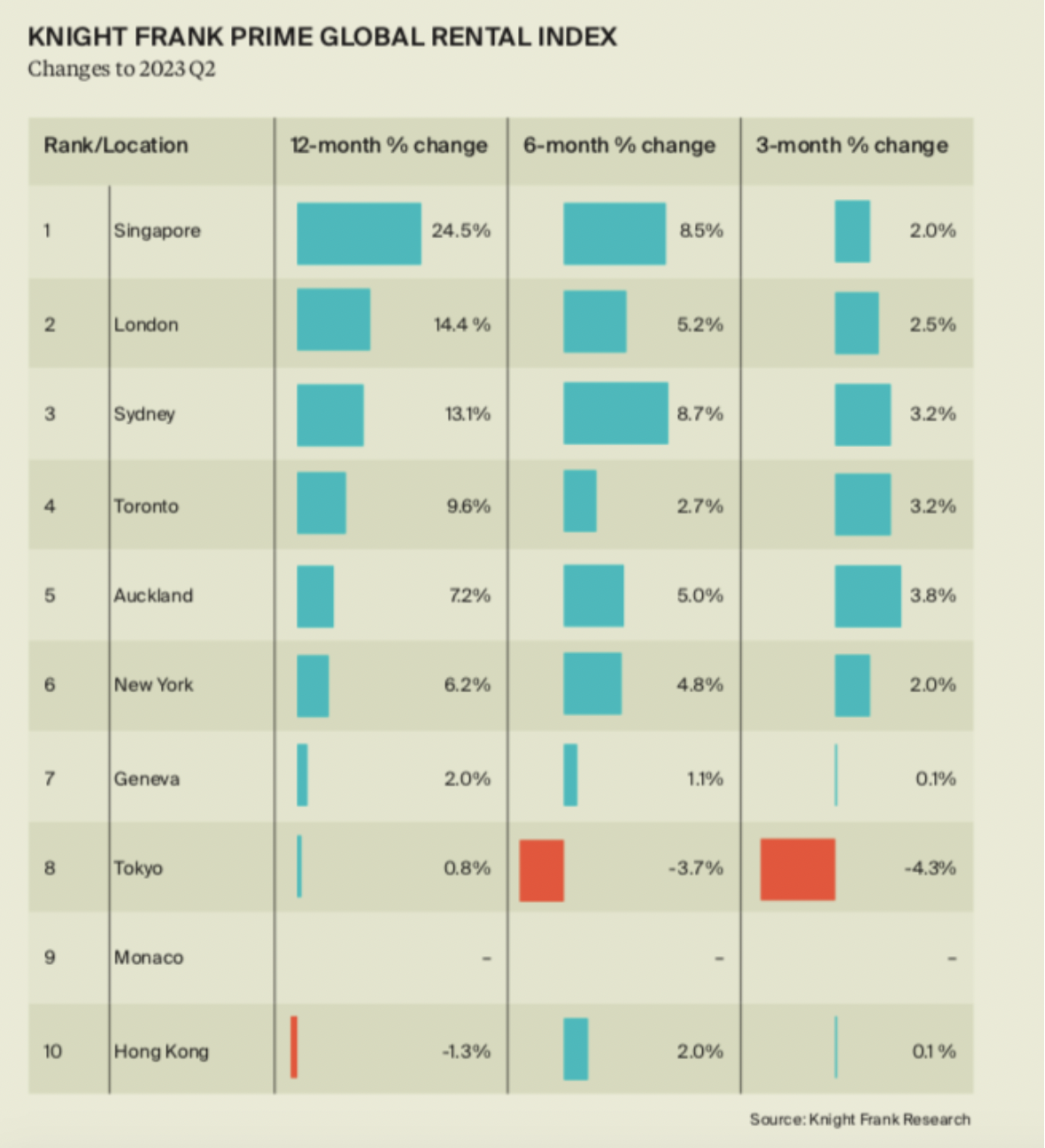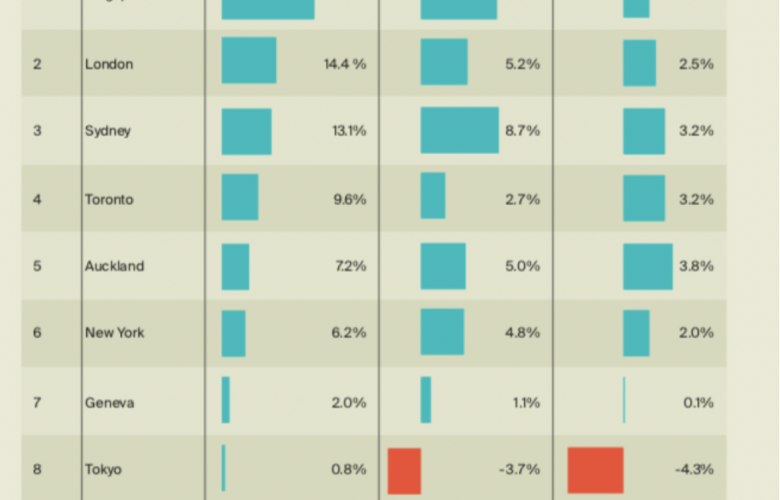Sydney luxury residential rents rise by 13.1% over 12 months, the third highest growth of 10 global cities measured by Knight Frank
Contact
Sydney luxury residential rents rise by 13.1% over 12 months, the third highest growth of 10 global cities measured by Knight Frank
Sydney's annual luxury rental growth in the 12 months to the end of June 2023 surged from 11.7% to 13.1% compared to the previous quarter, bucking the global trend of slowing growth in rental rates, according to the latest research from Knight Frank.
Sydney's annual luxury rental growth in the 12 months to the end of June 2023 surged from 11.7% to 13.1% compared to the previous quarter, bucking the global trend of slowing growth in rental rates, according to the latest research from Knight Frank.
Knight Frank’s Prime Global Rental Index (PGRI) Q2 2023, which provides a quarterly snapshot of trends in luxury lettings markets across 10 key world city markets, found average prime rents in key world cities were running hot, with annual growth of 7.5% in the 12 months to June.
This rate was down from the 8.2% seen in Q1, and lower than the 12.2% growth reached in the first quarter of 2022 – which marked the peak of the post-pandemic rental boom – but current growth remains well above trend.
Pre-pandemic, the 10 years to 2020 saw average annual growth of 2.2%.
But since the start of 2021, as the market recovered from the initial shock from COVID, the index has seen average growth of 6.6%, with current growth almost three times above the pre-pandemic average.
Sydney is currently sitting in third spot for annual luxury rental growth according to the PGRI, with 12- month growth of 13.1%, coming in behind Singapore (24.5%) and London (14.4%).
The city has maintained its ranking for annual luxury price growth from the last quarter, when it again came in third, having moved up from sixth place in Q4 of 2022.
The New South Wales’ capital has seen the largest growth over the past 6 months in luxury rents of 8.7% and the second largest growth over the past three months at 3.2%.

Knight Frank Head of Residential Research Michelle Ciesielski said the recovery in rents over the past two years had been remarkable.
“The overall index has risen by 23 per cent from Q1 2021 to date,” she said.
“Growth in specific cities has been even stronger, with New York, Singapore and London seeing rental growth of 56%, 53% and 51% respectively over the same period.
“While some of the PGRI growth hubs have seen a moderation in the pace of rent rises, including Singapore, London and New York, and the index overall shows a fall in the pace of rental growth, Sydney is seeing the opposite trend with annual growth increasing compared to the previous quarter.
“Key drivers for rental growth are led by strong demand as residents return to cities following lockdowns, the affordability squeeze as some prospective buyers are priced out of sales markets following rate hikes and weak new supply following construction disruption through the pandemic.
“While the rate of growth in many cities will undoubtedly slow, lack of progress on new delivery means tenants will face high rents for the foreseeable future.”
Knight Frank Head of Residential Erin van Tuil said: “A chronic undersupply of rental homes currently extends to most parts of Sydney at every price point, and this continues to be reflected in the double-digit rental growth for luxury property being recorded.
“In affluent areas, there tends to be at least one home in the street having some type of renovation work done, and many take up a rental home while these works are being carried out. Construction delays over the past few years have meant these prime rental homes are required for double or triple the time than first expected while they wait for tradespeople and prime cost items from around the world to be delivered to finish the job.
“We continue to experience a skills shortage in Sydney, and this extends to the executive level who are most likely going to need a prime residential home provided when lured to work here. Elevated rents are being paid to secure a prime rental home until they settle into the city.
“In the past few months, there has been an increasing number of box office movies being filmed in Australia with actors and production crew using Sydney as their base, placing further pressure on the top end of our rental market.”






